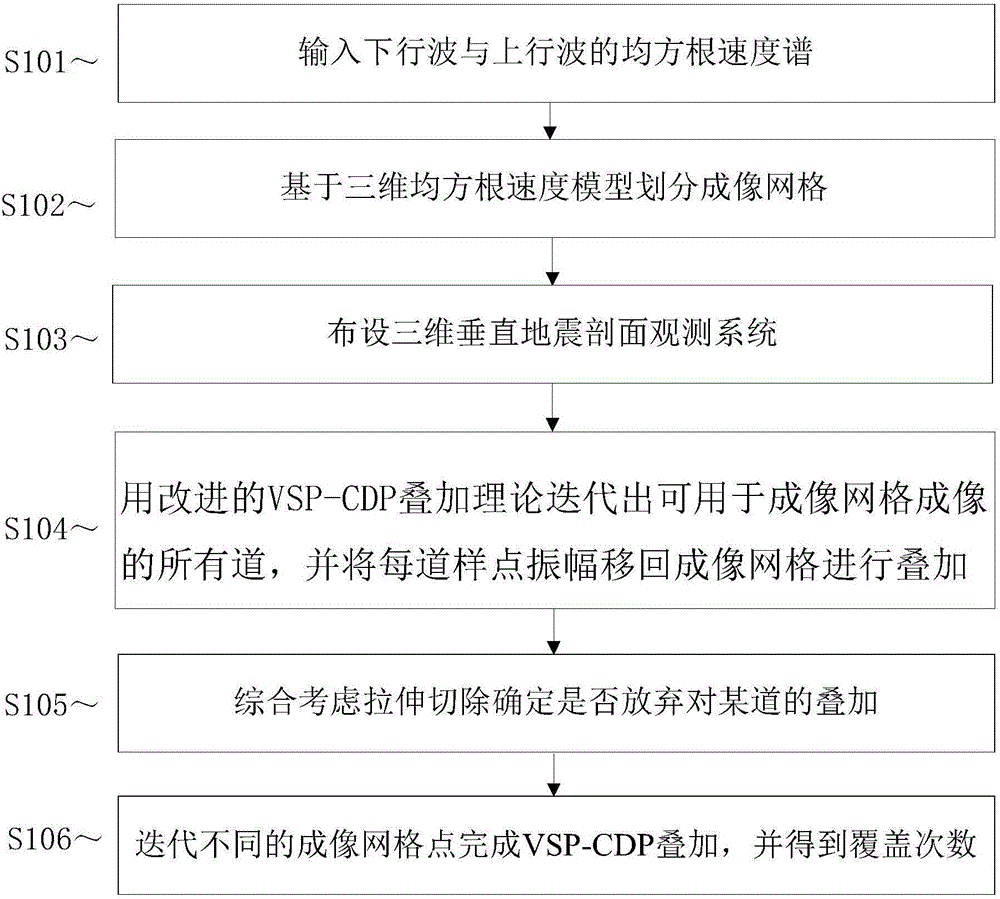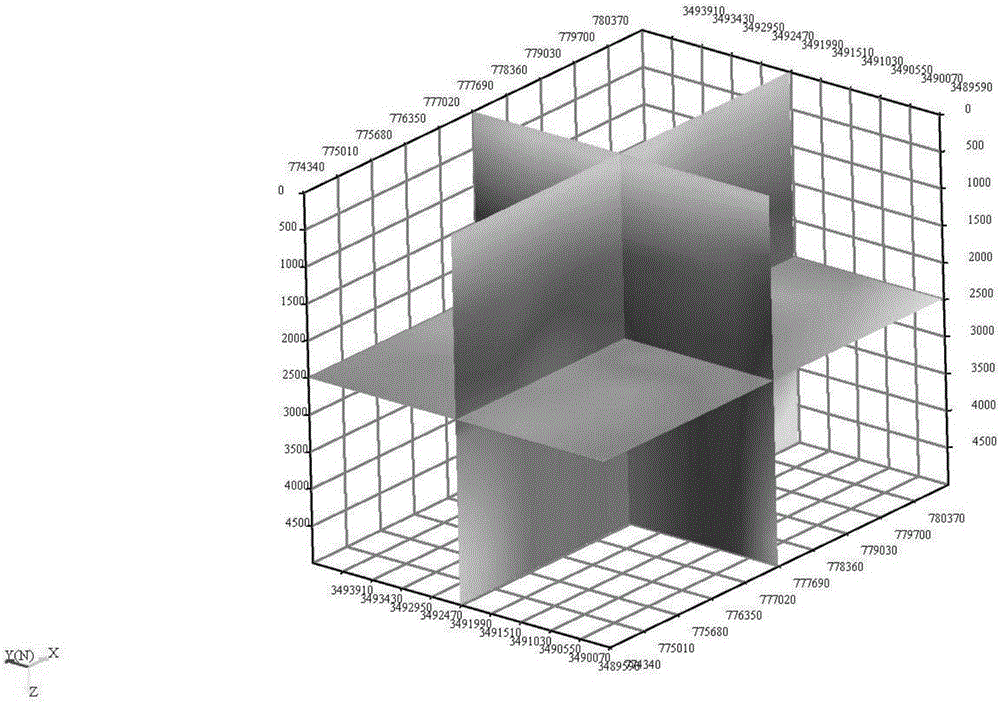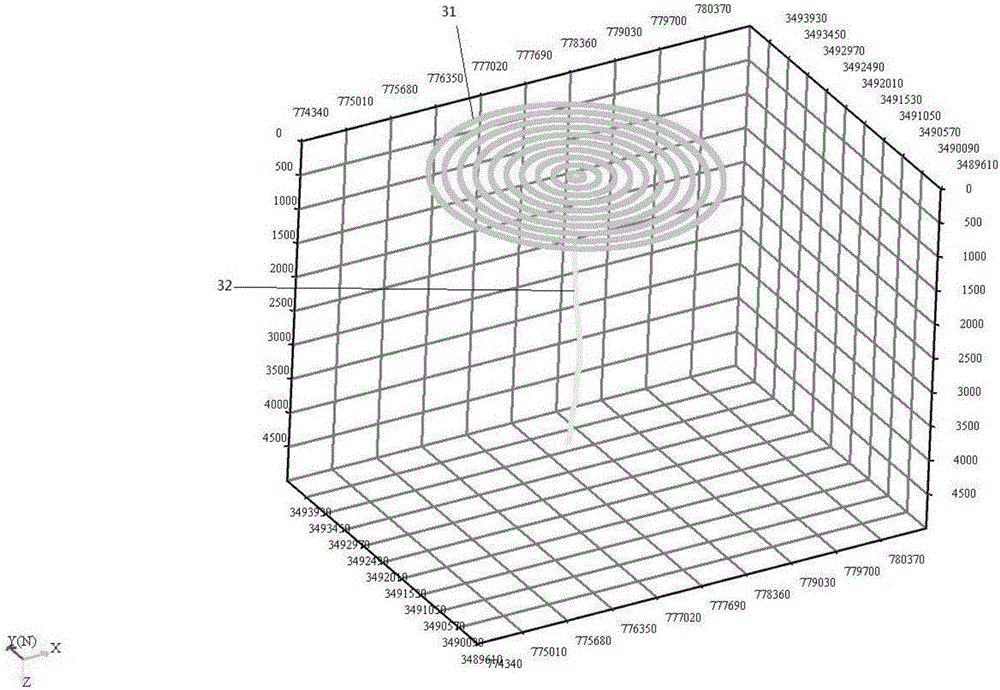VSP-CDP stacking method and three-dimensional VSP coverage number calculation method
A stacking method and technology of coverage times, applied in the field of optimal design of vertical seismic exploration three-dimensional observation system, can solve the problems of no gradient, change, low calculation efficiency, etc., and achieve the effect of reducing time
- Summary
- Abstract
- Description
- Claims
- Application Information
AI Technical Summary
Problems solved by technology
Method used
Image
Examples
Embodiment Construction
[0026] Hereinafter, the bin iteration-based VSP-CDP stacking method and the calculation method for three-dimensional VSP coverage times according to the present invention will be described in detail with reference to the accompanying drawings and exemplary embodiments.
[0027] figure 1 A flow chart of a method for calculating the number of coverage times of a three-dimensional VSP according to an exemplary embodiment of the present invention is shown. figure 2 It is a schematic diagram of the velocity spectrum of upgoing and downgoing waves. image 3 It is the layout map of the three-dimensional vertical seismic profile offset points. Figure 4 A schematic diagram of the VSP ray path. Figure 5 It is a schematic diagram of the three-dimensional vertical seismic section coverage times obtained by the method for calculating the three-dimensional VSP coverage times according to an exemplary embodiment of the present invention. Among them, in figure 2 and Figure 5 Among t...
PUM
 Login to View More
Login to View More Abstract
Description
Claims
Application Information
 Login to View More
Login to View More - Generate Ideas
- Intellectual Property
- Life Sciences
- Materials
- Tech Scout
- Unparalleled Data Quality
- Higher Quality Content
- 60% Fewer Hallucinations
Browse by: Latest US Patents, China's latest patents, Technical Efficacy Thesaurus, Application Domain, Technology Topic, Popular Technical Reports.
© 2025 PatSnap. All rights reserved.Legal|Privacy policy|Modern Slavery Act Transparency Statement|Sitemap|About US| Contact US: help@patsnap.com



